Marco Lang is a fifth-generation watchmaker with watchmaking in his blood, a passion for the art form, and ingenious mechanics in his genes.
Dresden-based Lang was an apprentice in Glashütte in precision mechanics for three years, which he followed by earning a master certificate in watchmaking. He was happily running a booming restoration business when in 2001 he met Mirko Heyne, one of the most promising apprentices A. Lange & Söhne had ever trained. During his time at A. Lange & Söhne, Heyne was taught and guided by Marco’s father, Rolf Lang, who was in charge of apprentices there at the time. It didn’t take long for the two talented young watchmakers to meet and quickly discover that they had a similar outlook on watchmaking.
Deciding to pool their talents to reach their common goals, Lang and Heyne established a small company in Dresden, not far from Germany’s center of luxury watchmaking in Glashütte, thus joining a long tradition of watchmaking in Dresden that started in 1668, when Johann Georg III certified the foundation of the city’s first independent watchmaker’s guild.
Just one year later, in 2002, Lang & Heyne presented its first watches with the A.H.C.I. (Academy of Independent Watchmakers) at Baselworld, kicking off Lang’s long relationship with the group of independent watchmakers. He became a full member in 2005.
Heyne left the company in 2002, setting out in a different direction as head of movement design at Nomos Glashütte, while Lang successfully continued to build his vision of a genuine manufactory in the original sense of the word, where timepieces are handmade in limited series.
Eventually, Lang & Heyne was subjected to bigger plans and an investor, becoming part of a group called Tempus Arte with four distinctly different quarters, all of which were headed by the organizational and horological talents of Marco Lang: Lang & Heyne, Uhren-Werke-Dresden (UWD), Leinfelder, and a retail location originally called Hartding, but later renamed Tempus Arte.
In 2019, creative differences between Lang and the investor saw him leave his namesake company at the age of 47. He has now begun a second career as a fully independent watchmaker using his own name – “Marco Lang” – and has just delivered the first example of his new era’s first watch: Zweigesicht-1.
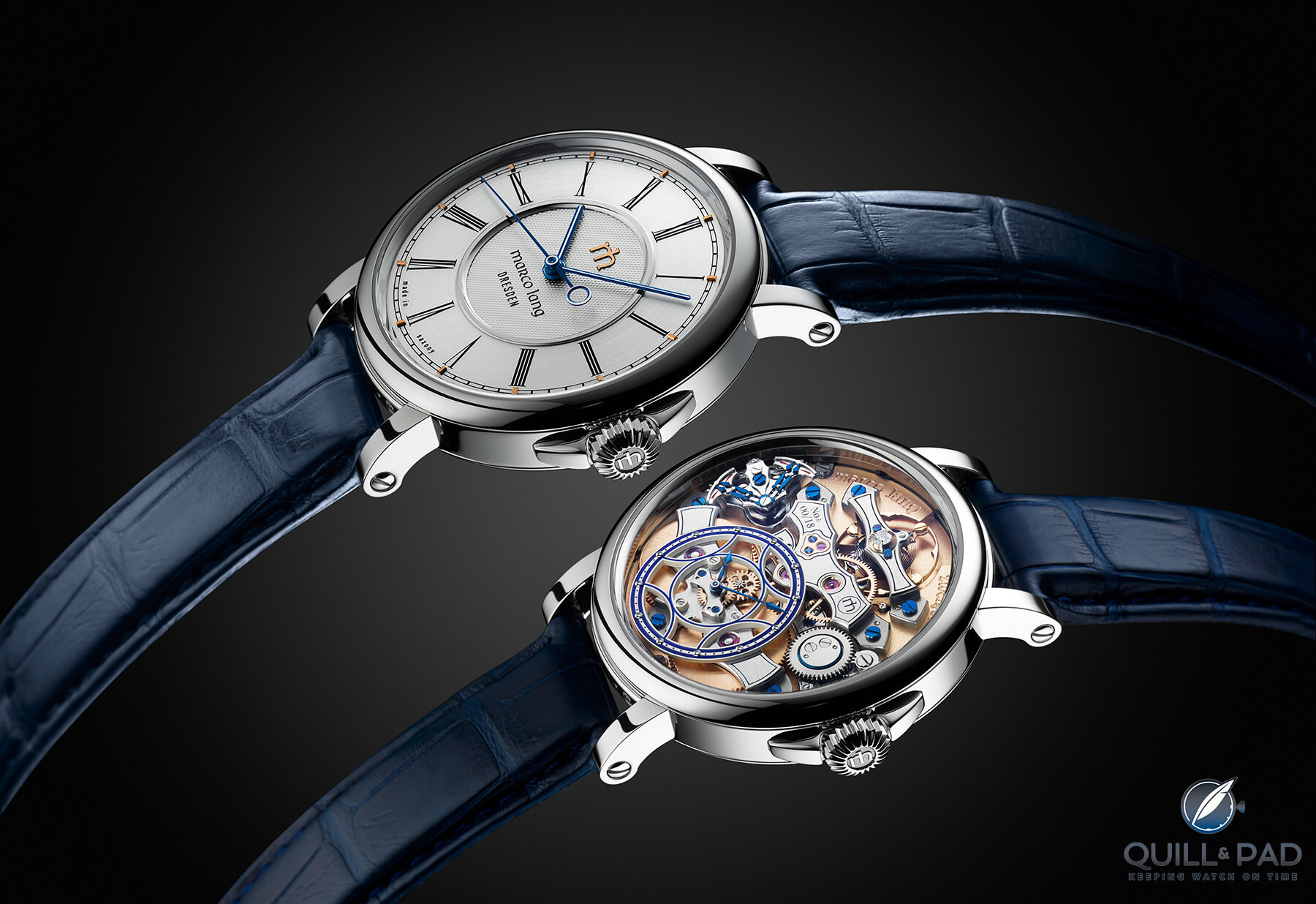
Both sides of Marco Lang’s Zweigesicht-1
Marco Lang on his own: Zweigesicht-1
The timepieces made by Lang & Heyne exude a certain vintage flair and their traditional appearances also tend to hide the degree of complication in their movements. And Lang’s first solo timepiece – the aptly named Zweigesicht-1 – definitely belongs in that same category, even if the somewhat soberer style is different to the ornate flourishes that Lang & Heyne has been known for.
Lang has always been a watchmaker with a lot of ideas. And a lot of energy. And so he put his ideas and motivation to good use for the premier timepiece of his solo brand, coming up with something both expected and unexpected.
And it does something that I’ll bet most die-hard watch aficionados wish all their favorite independent watches would do: it allows the wearer to decide whether the front or the back is showing at a given time, basically providing two watches in one. While “changing sides” on the Zweigesicht-1 is not quite as easy as on the Jaeger-LeCoultre Reverso or the De Bethune Kind of Two Tourbillon, it can be accomplished in about two minutes and quite easily with a screwdriver. No watchmaker skills necessary, I promise!
The only thing the owner needs to do is take off the strap (done with a half turn of a screwdriver), flip the watch over, and re-attach the strap halves. “Perfecting this system was harder than I would have thought,” Lang laughed when I visited his workshop in the late fall of 2020.
Zweigesicht-1, like all the Lang & Heyne watches that came before it, can be personalized as the client wishes since it is entirely made by the master himself. In other words, every single example of this watch can (and should) be a unique piece in that materials, engravings, dial, and even the way it is finished can be requested by the owner.
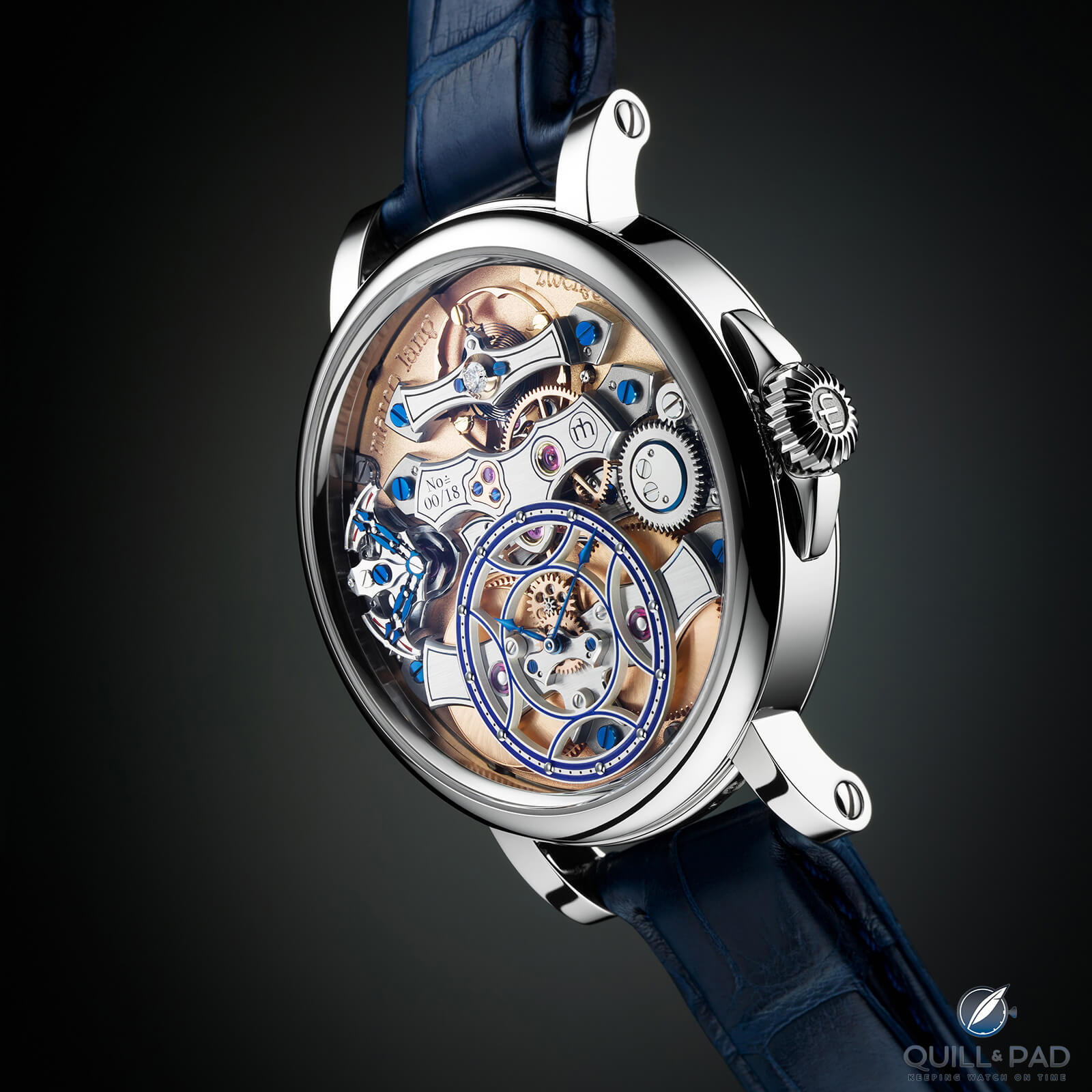
Marco Lang’s Zweigesicht-1 in platinum
The idea for this watch came from Lang’s earlier work and discussions with clients. “When I used to travel to customers, they would always tell me that my work was so beautiful they would prefer to wear the watch with the movement side showing,” Lang explained. “I am still of the opinion that the movement belongs in the back and the time display on the front, but I did want to make it possible for clients who have another opinion to wear the watch as they please.”
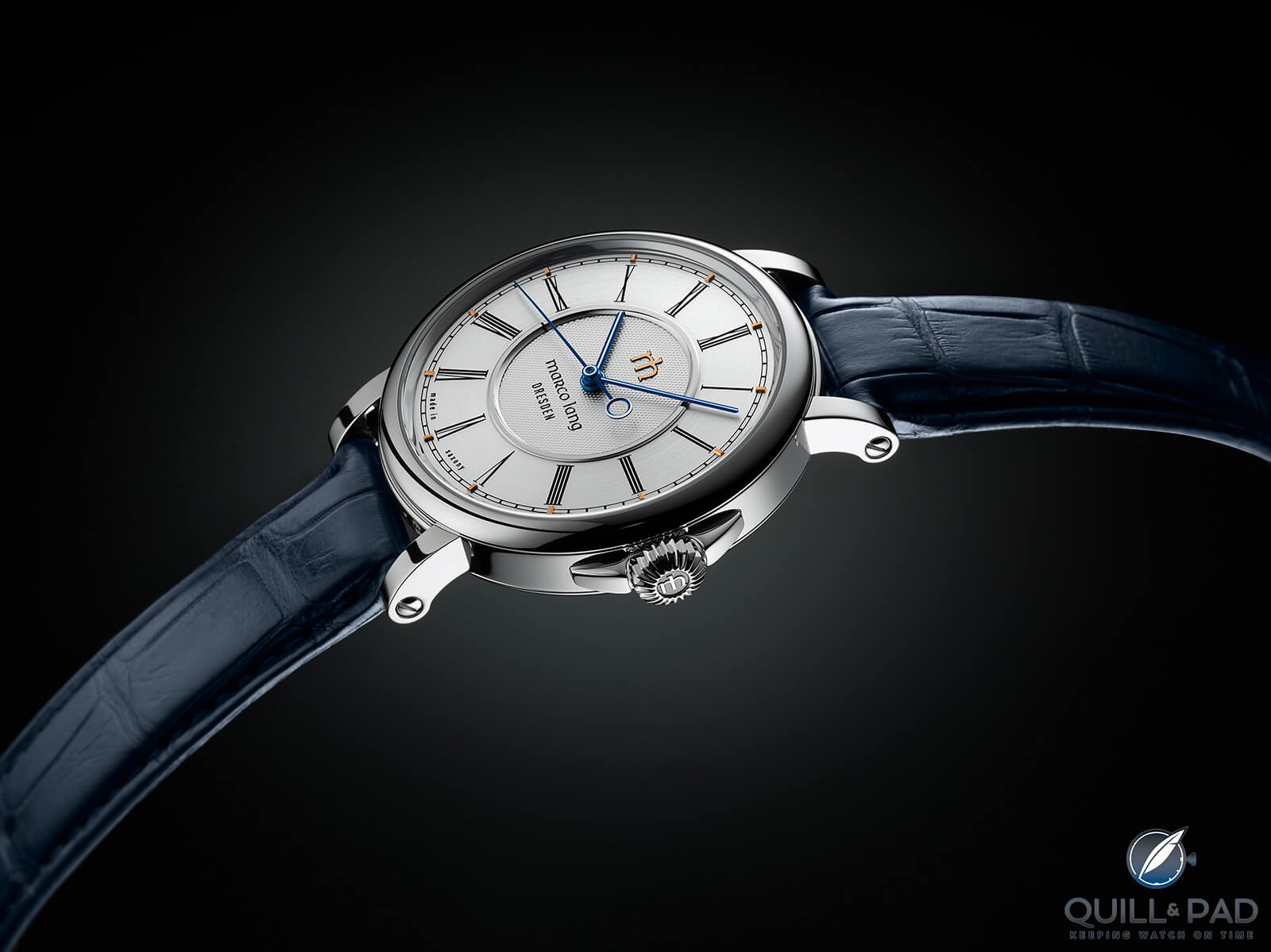
Marco Lang Zweigesicht-1
“Zweigesicht” means “two face” in German.
Marco Lang Zweigesicht-1 Caliber ml-01
Lang’s ingenuity knows few bounds. So when I visited him to see how things were progressing, I wasn’t surprised to see something so new on his workbench, something that hadn’t been done before.
“I wanted to make a movement based on bridges this time,” he told me, adding that he wanted the bridges to have sweeping shapes. “I’m calling these flying bridges,” he said, pointing out how they look like the wings of a bird taking flight and even batwings.
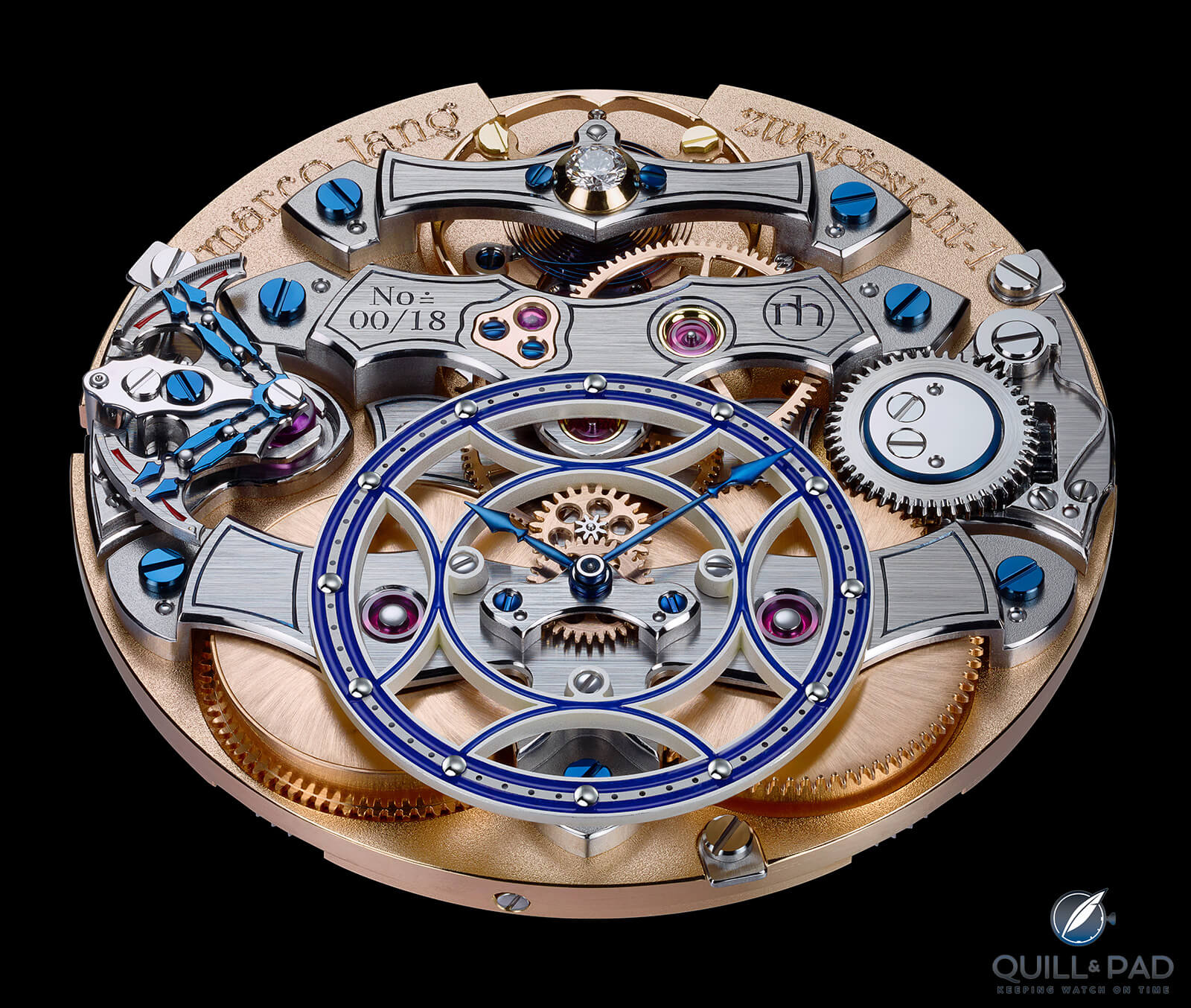
Caliber ml-01 of Marco Lang’s Zweigesicht-1
The other thing that struck me looking at this 34 x 4.4 mm movement is the beautiful symmetry that reminds me of the incredible Lang & Heyne Georg model in some weird way, which was the last product Lang produced at Lang & Heyne.
Gone is the languid, vintage-style 2.5 Hz frequency Lang used at Lang & Heyne; the Zweigesicht-1 has taken a step forward into the (slightly) more modern frequency of 3 Hz for better functionality and accuracy. Lang uses a free-sprung balance, the style of choice among traditionally minded watchmakers, with a conventionally blued balance spring.
The four-legged balance wheel with micrometer screws was inspired by the shape of a gothic church window. It is topped off by a balance bridge and a large diamond endstone two millimeters in diameter. “That type of endstone has always been my signature feature,” Lang reminded me, remarking that this one is larger than those he used at Lang & Heyne to ensure more optical brilliance and shine.
Lang did not experiment with the escapement this time around. While he makes the pallet fork and the escape wheel himself, the rest of the system is sourced from Nivarox for perfect reliability now and to ensure that later service watchmakers are able to perform easy maintenance. This means that whenever Lang is no longer with us, his watches can easily live on, ensuring worry-free purchase for the owners.

Marco Lang’s Zweigesicht-1 in pink gold
The cherry on top of Caliber ml-01: the shock indication
The cherry on top of this movement is the shock function found on the left side at the end of the left “batwing.”
“This is an entirely new invention, but because it’s entirely new it’s a bit hard to explain,” the watchmaker said, relating that “sometimes watches would come back for service, with the customer saying, ‘yeah, I don’t know what happened, I probably knocked into a door jamb but don’t know how hard I hit the watch’.”
Lang hit upon the idea to make a mechanical measurement that can display the severity of a shock: this function within the watch basically tells you how hard you may have hit it. Like a mechanical accelerometer but one that is also artistic and visually attractive, adding charm to the movement.
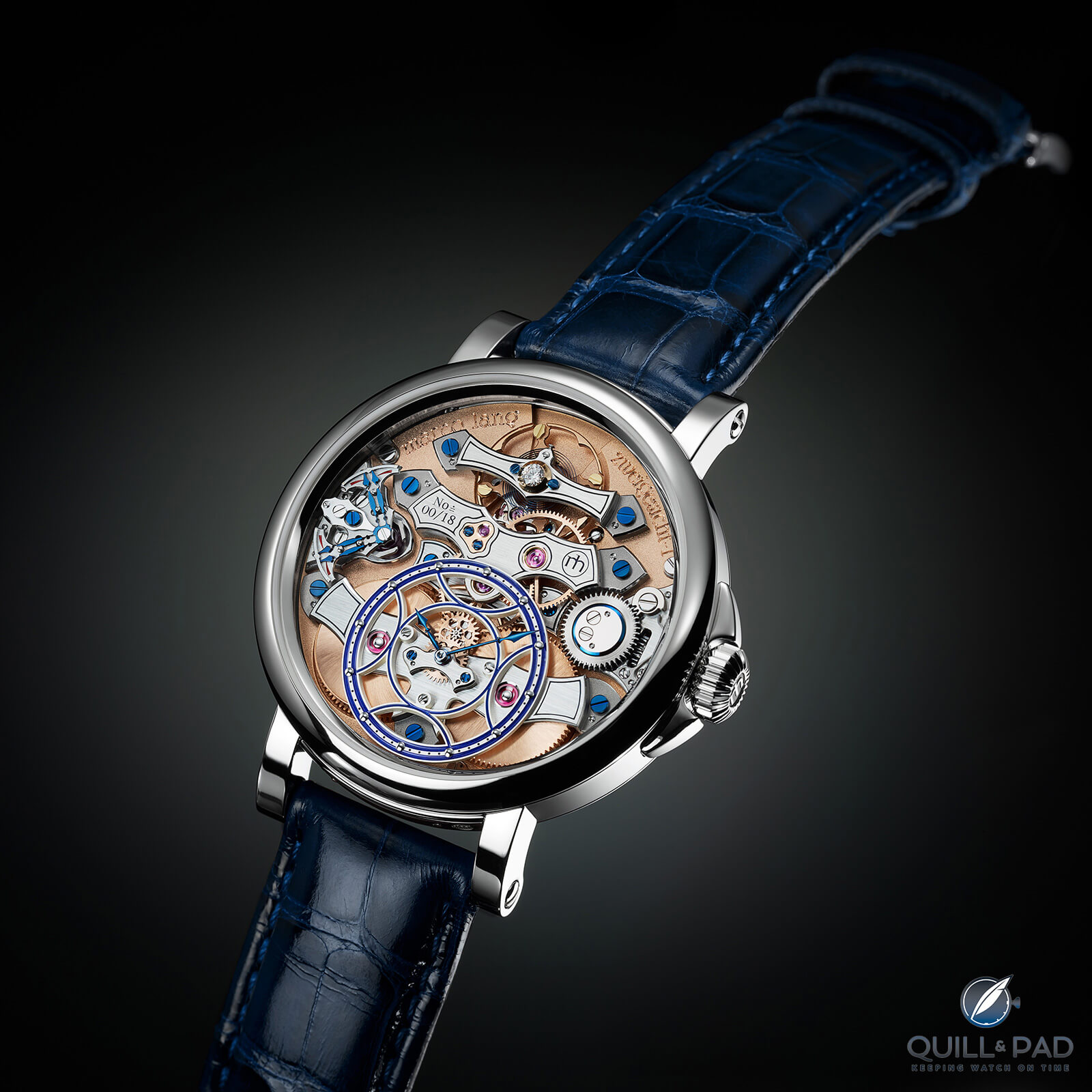
The movement side of Marco Lang’s Zweigesicht-1
“This could be used after golfing with the watch on or even biking over cobblestones,” said Lang – like the kind that pave so many of Dresden’s historic streets, I thought.
“It’s a treat for the client,” Lang described. And I concur. The little blued hands move along little scales to show the severity of a shock the watch was subjected to using a spring that moves the tiny hands.
It’s not something necessary, but it’s fun, and it heads toward the technical limit. It is a mechanical assembly that reacts quickly and accurately and can also help the watchmaker calibrate to the lifestyle of the client.
The shocks add up on the display. “At some point the hands will all be at the end of their arcs,” Lang explained. And I guessed at the latest then it will be time to take it back for servicing. But Lang explained that owners can reset the hands themselves using a recessed pusher in the case.
Lang calls this function the shock indication. And this functionality is optional and part of the customization choices – clients can order the movement with or without it. I know I’d order it with, but not necessarily because I need to know what kind of shock I’m subjecting my watch to, but simply because the assembly is just so beautiful. “It’s fun to experiment and see what I can come up with to push the envelope,” Lang added.
Should a client not want to have the shock indication, that position will have a small platelet that can be personalized with engraving.
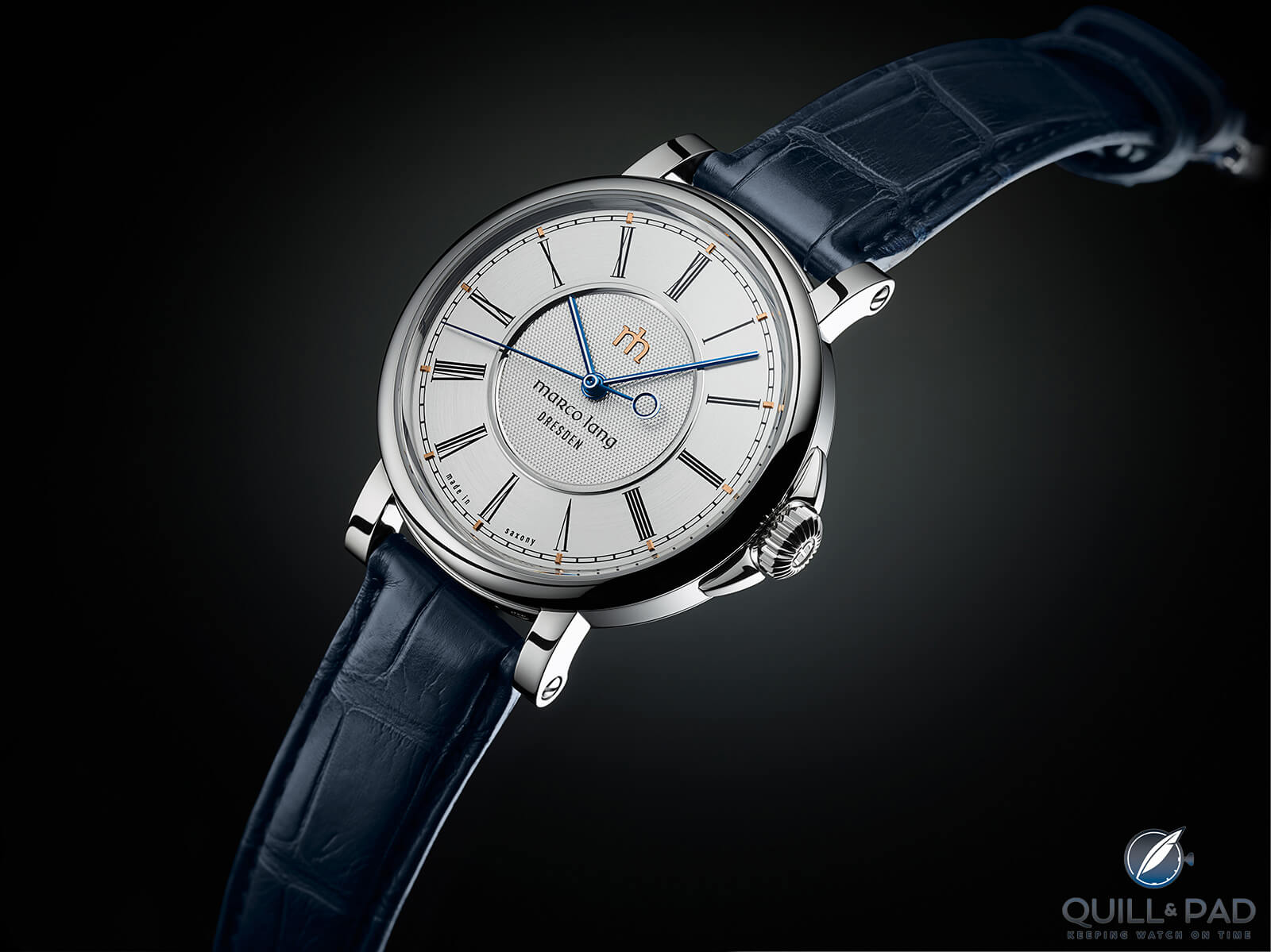
Marco Lang Zweigesicht-1 in stainless steel
More on Caliber ml-01
The movement is colorful: blued components, blued screws, ruby-red bearing jewels, the silver shine of steel, the matte shine of pink gold plating on the base plate, and the yellow sheen of 14-karat hard gold used for the gear wheels.
The svelte movement includes two dial trains, one on the front and one on the back. The subdial for the time on the back, found at 6 o’clock, is 18 mm in diameter and outfitted with beautifully blued hands.
Lang took his time getting this movement right, reminding me that Lang & Heyne’s Kaliber 1 also took the longest to make – and was used as a base for other movements to follow.
“It’s still my style,” Lang said of the beautifully finished movement, “but it brings me far enough away from the Lang & Heyne watches.” Which he needs to do for his own sanity as well as to satisfy his previous business partner. “And it only makes sense that I’d want to do something different.”
Marco Lang makes his watches according to age-old horological traditions, filing and sawing at benches stocked with tools that watchmakers have been using for centuries. Unlike large companies – and even what he’d built at Lang & Heyne and UWD – there is not a trace of industrialism in Lang’s traditionally outfitted workshop, which is located in the same house that he and his family share in a beautiful residential area of Dresden.
Caliber ml-01 is still somehow a classic movement with symmetrical structure, but within that genre it is interesting, new, and certainly not standard. It is a watch for connoisseurs.
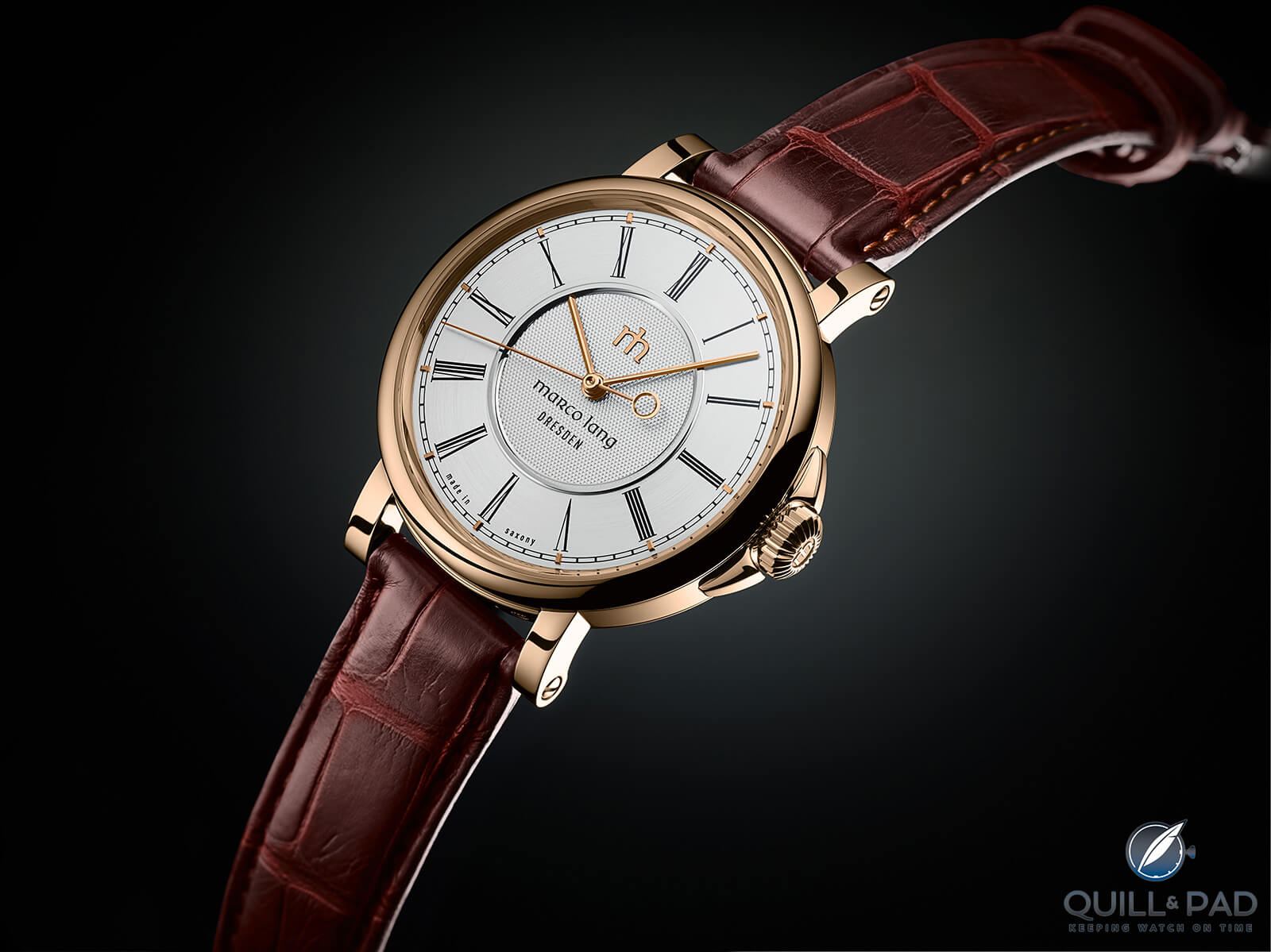
Marco Lang Zweigesicht-1 in pink gold
From the front, the Zweigesicht-1 is so classical that it would be nearly impossible to surmise the beautiful intricacy on the back.
As for the future, Lang explained that he is being careful not to promise too many examples of any one model. “It’s too easy to fall into what has happened to Philippe Dufour with the Simplicity, and now he has spent such a large part of his life making just that one model.”
Marco Lang’s Zweigesicht-1 is limited to 18 pieces in this execution, but there will surely be other variations in the future making up new limited runs if the demand is large enough. And so far Lang reports brisk sales.
For more information, please visit www.marcolangwatches.com.
Quick Facts Marco Lang Zweigesicht-1
Case: 40 x 9.3 mm, stainless steel, pink gold, or platinum
Dial: enamel with guilloche in the center
Movement: manually wound Caliber ml-01 with two serially operating spring barrels, 70-hour power reserve, 3 Hz/21,600 vph frequency, 28 jewels (27 ruby bearings and one brilliant-cut diamond endstone), free-sprung balance with blued balance spring, balance bridge, optional shock indication
Functions: hours, minutes, (hacking) seconds on the front; hours, minutes on the back; shock indication
Limitation: 18 pieces
Price: starting at €51,500 without shock indication functionality in stainless steel
You may also enjoy:
Lang & Heyne Squaring Off With Gorgeous Georg
Augustus by Lang & Heyne: No More Forgotten Anniversary Excuses
Lang & Heyne’s Marco Lang Heads New Watch Group
Saxon Watchmakers At Baselworld 2018: The Watches TV Illustrates Fine German Watchmaking In Video
Leave a Reply
Want to join the discussion?Feel free to contribute!







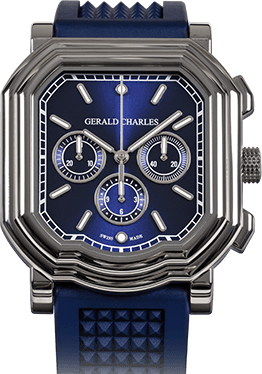
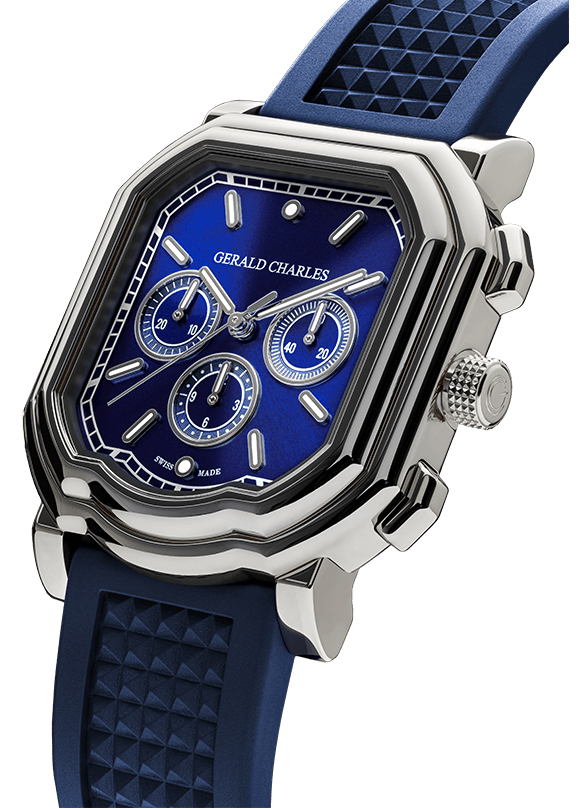

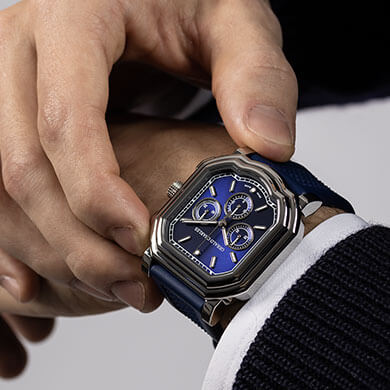
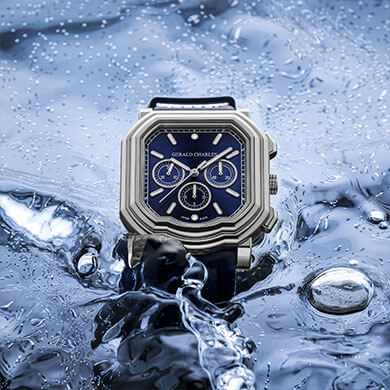

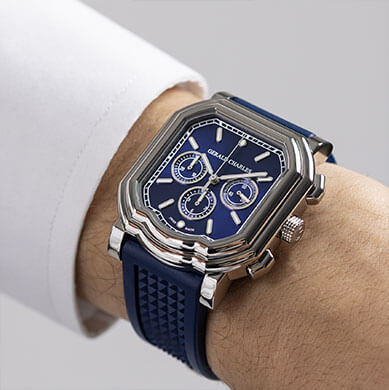



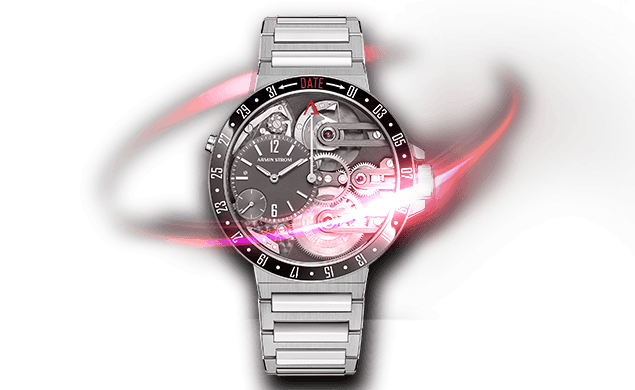
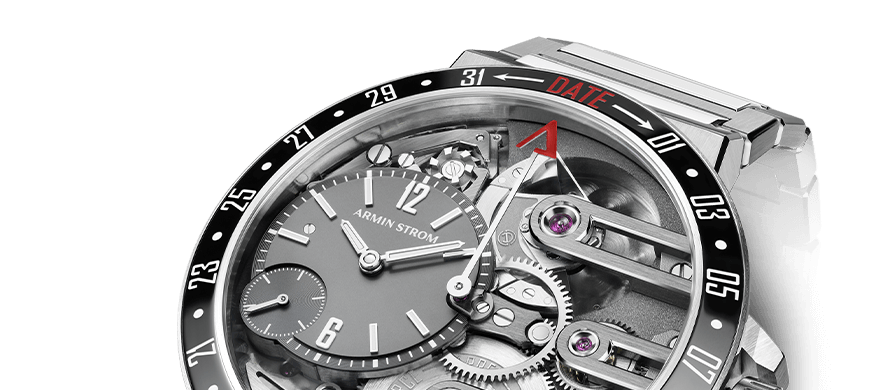
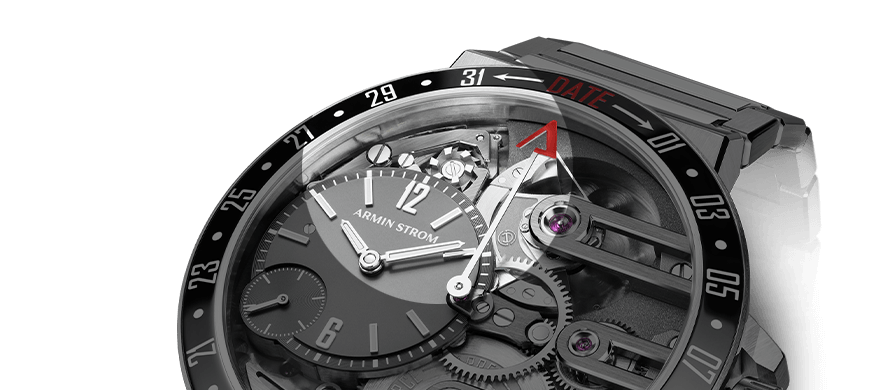


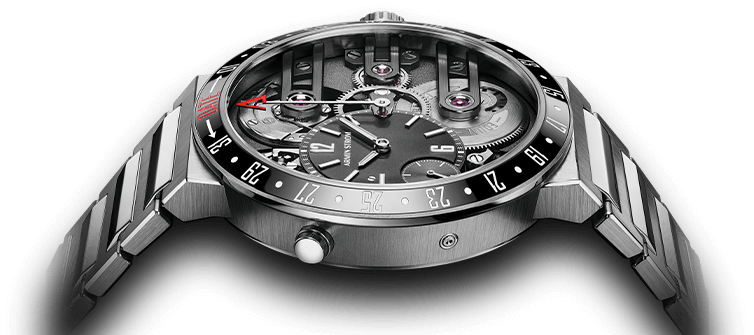
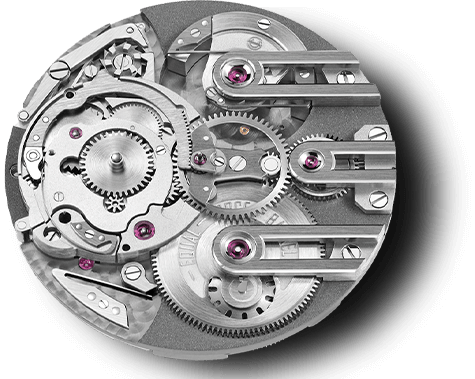

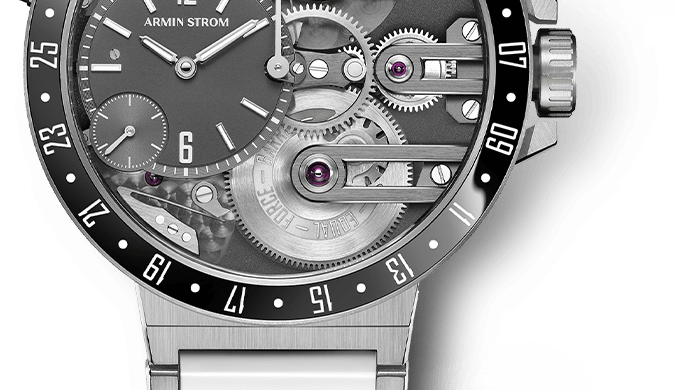
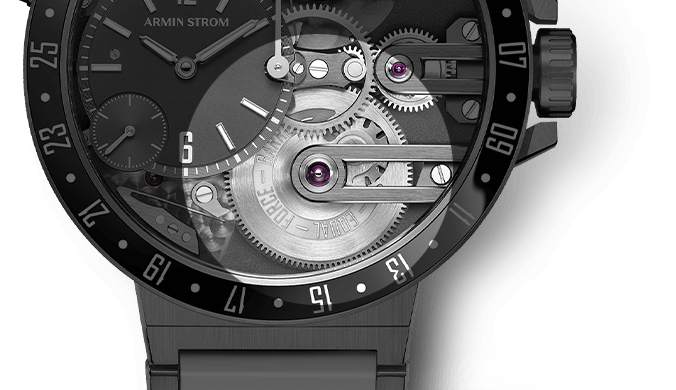


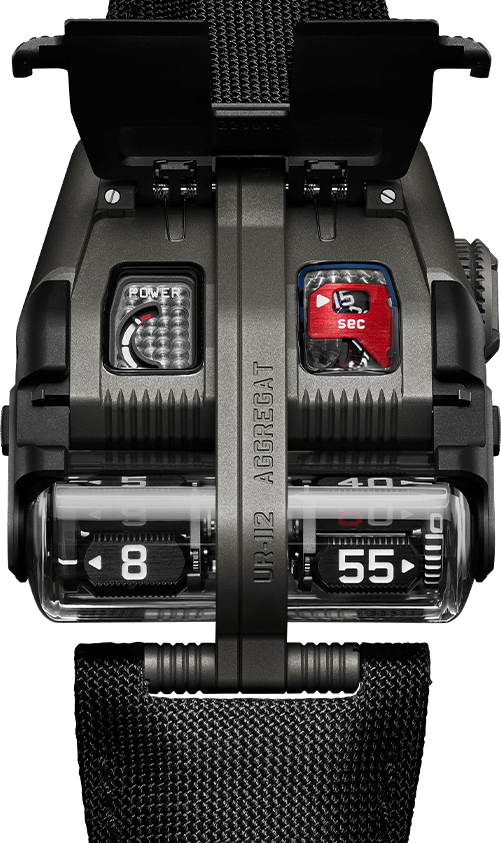

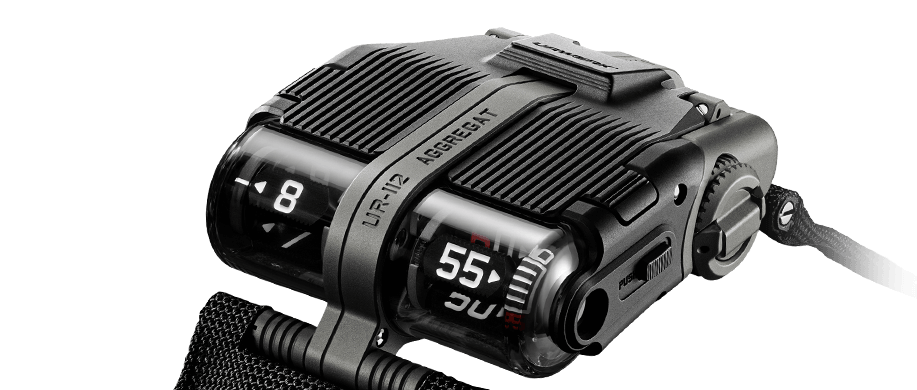
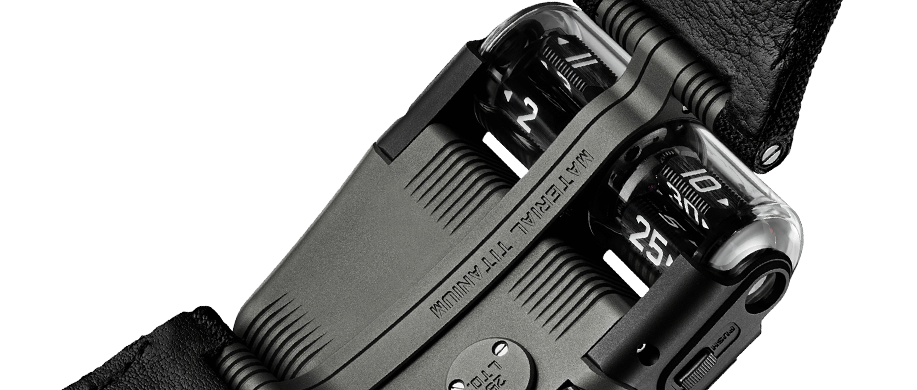
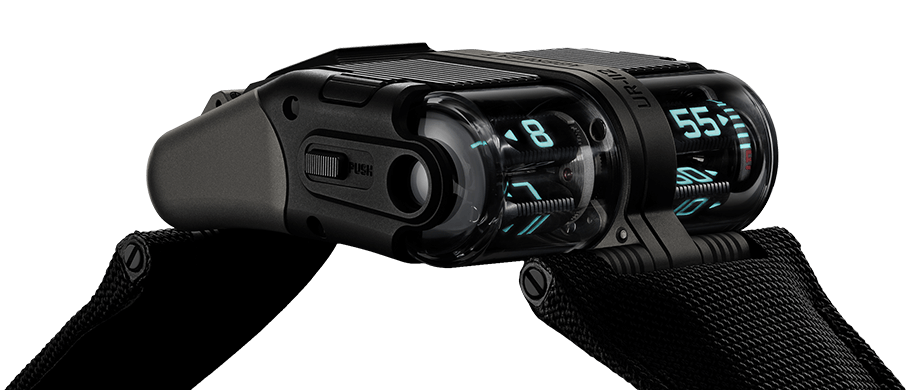


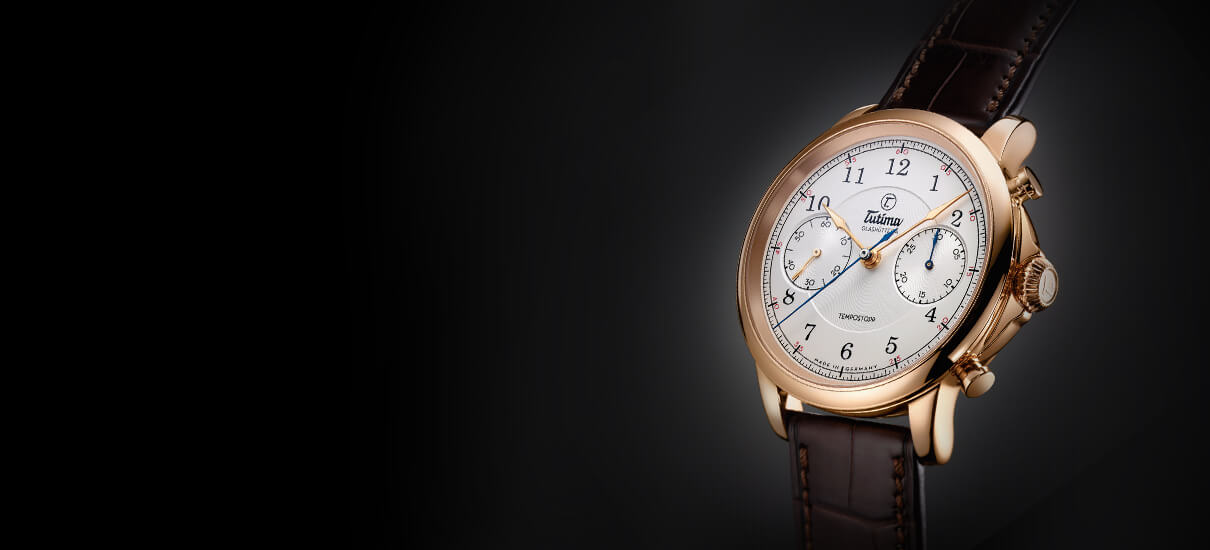

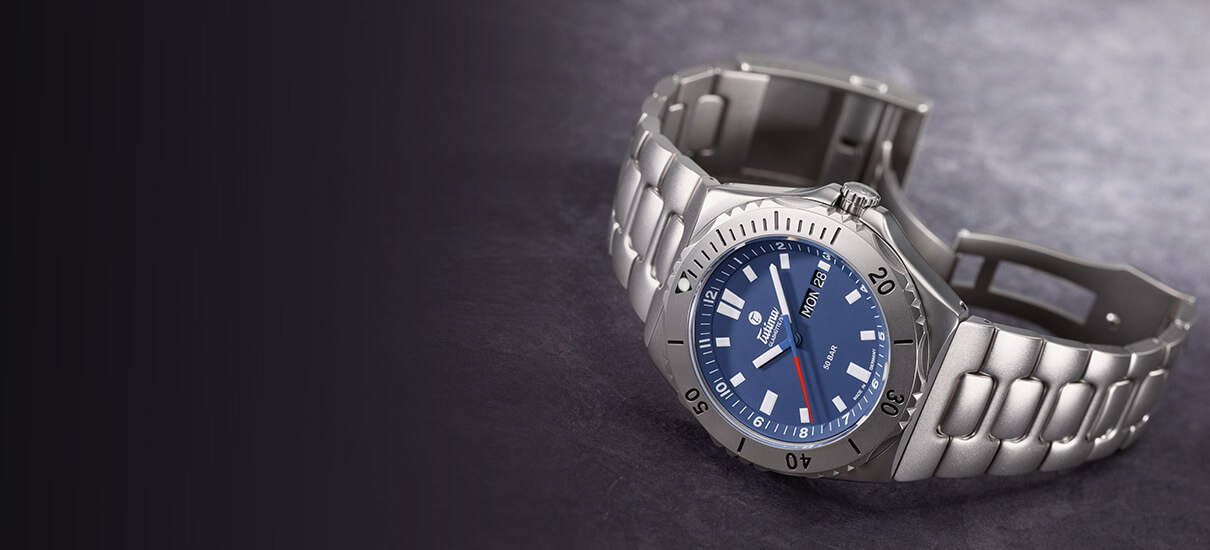

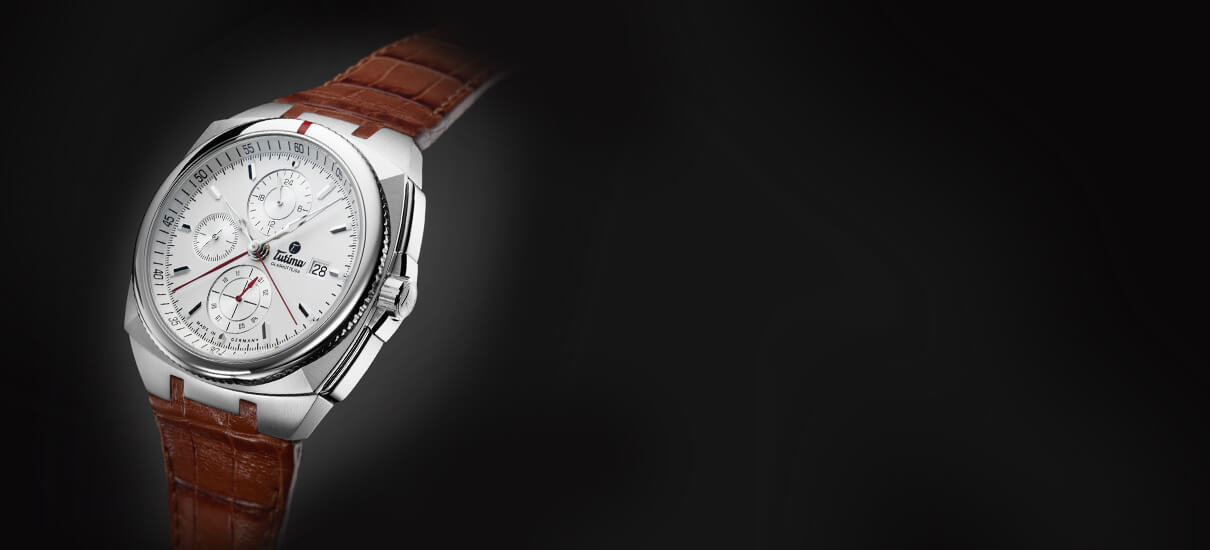

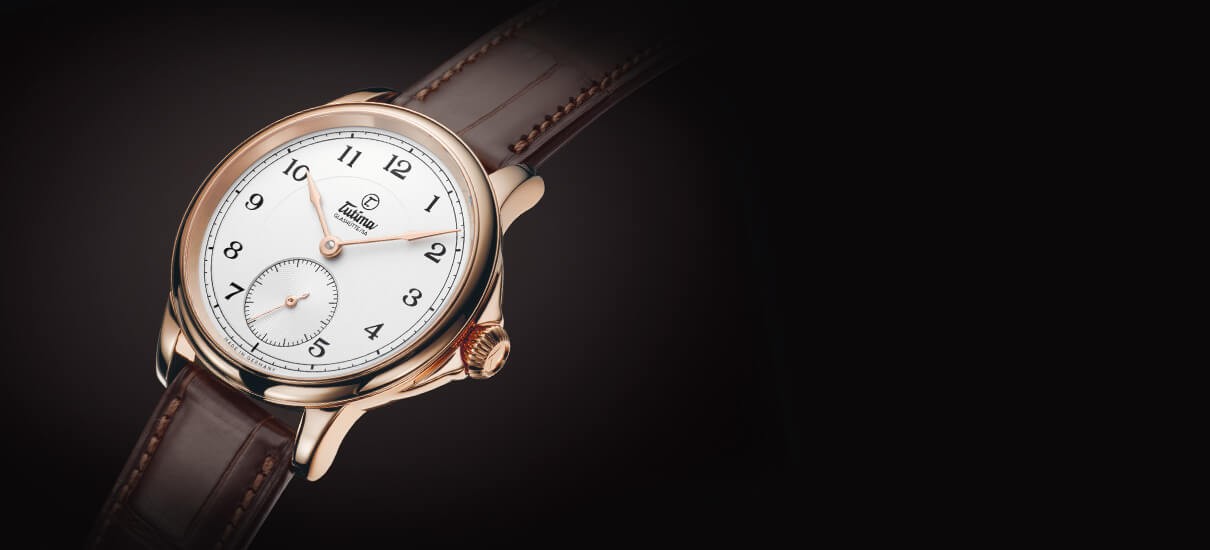

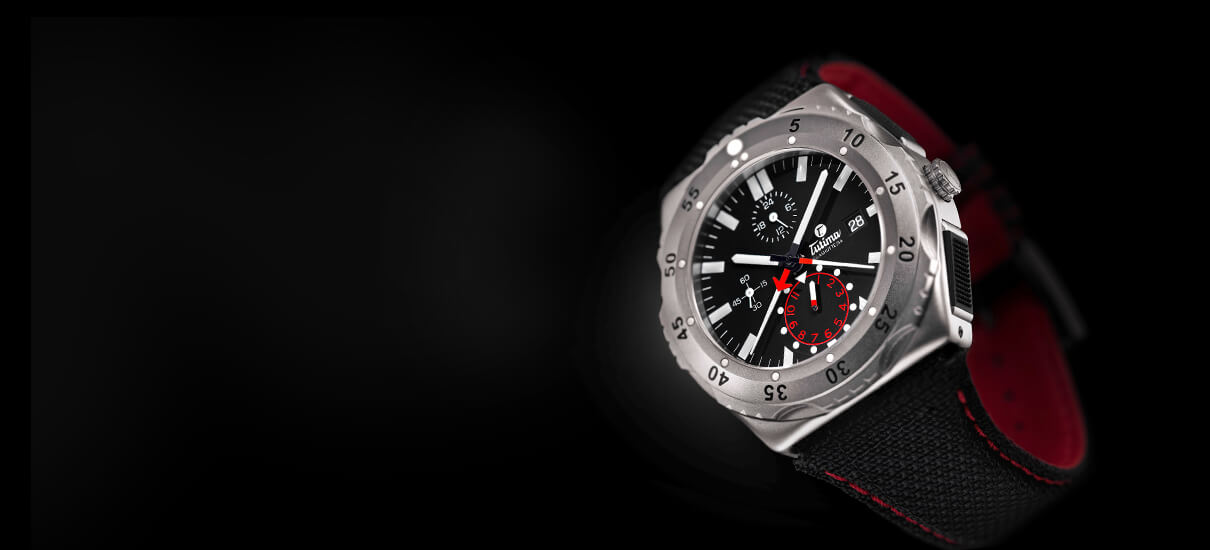

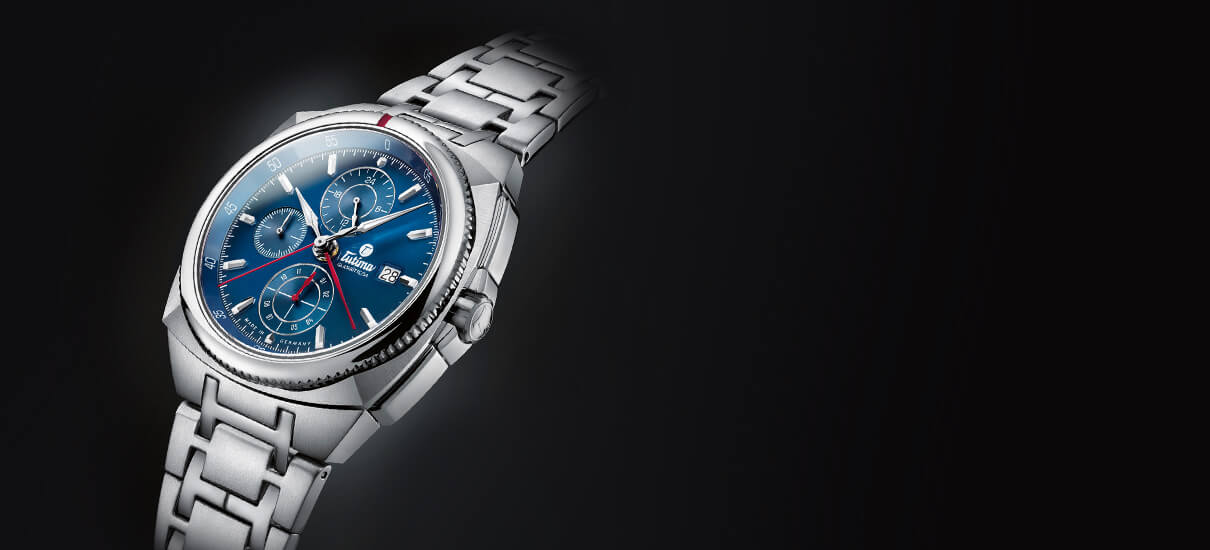

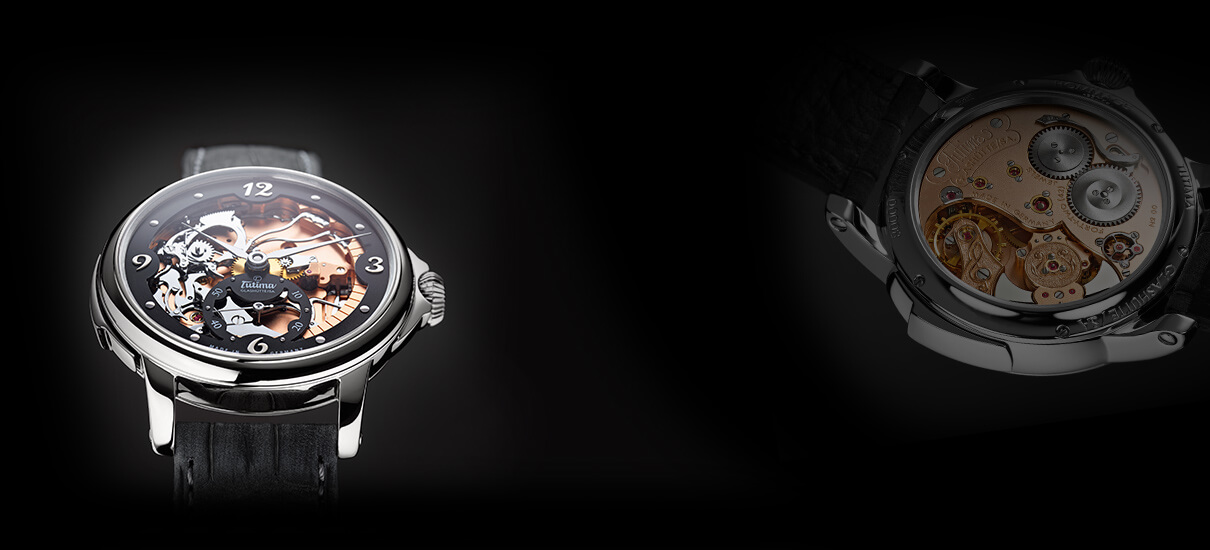



Very desirable – but beyond my bank balance (sigh). Personally I’m very pleased to see that L & H’s middle lug has gone!
Absolutely gorgeous, unfortunately they sold out quite some time ago. Really sad I missed out!
How in the world does one flip the lugs?
Hi Michel,
You do not turn the strap over, they stay attached to the lugs. You turn a small screw under the lugs and they come out and can be turned over. Check out the video I added to the article near the top
Regards, Ian
That explains it. Thank you.